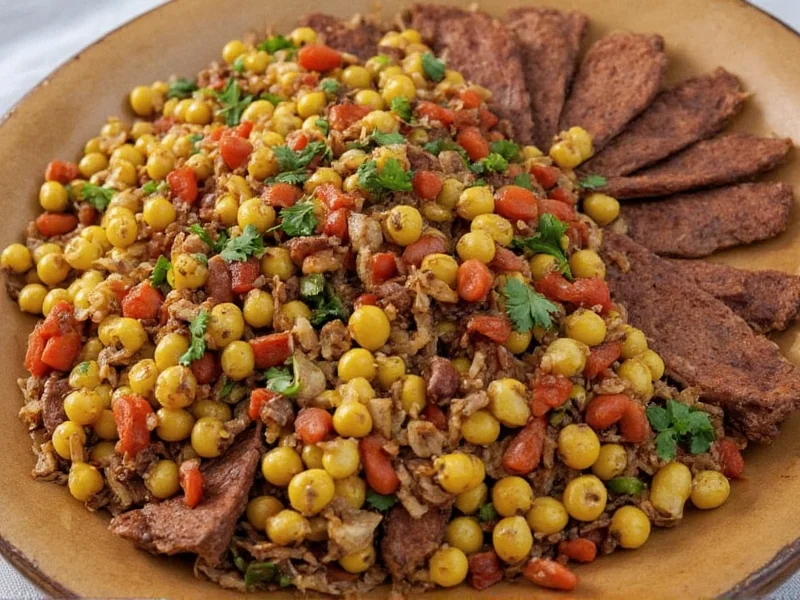The Mesoamerican Agricultural Foundation
Indigenous civilizations across what is now Mexico developed one of history's most sophisticated agricultural systems long before European arrival. The famous 'Three Sisters'—maize, beans, and squash—formed the nutritional cornerstone of pre-colonial Mexican diets. Maize wasn't merely food; it held profound cultural and religious significance, featuring prominently in creation myths and daily rituals. Archaeological evidence shows maize domestication began approximately 9,000 years ago in the Balsas River Valley, evolving through selective breeding into dozens of regional varieties adapted to different climates and elevations.
Beans provided essential amino acids that complemented maize's nutritional profile, while squash offered vitamins, healthy fats, and edible seeds. This agricultural triad created a complete protein profile when consumed together—a nutritional understanding developed through generations of Indigenous knowledge. Farmers employed advanced techniques including terracing, irrigation systems, and chinampas (raised agricultural islands in lake systems) that maximized productivity in diverse environments from highland valleys to tropical lowlands.
Essential Plant-Based Foods
Beyond the foundational triad, pre-Hispanic Mexican diets featured remarkable botanical diversity. Tomatoes, tomatillos, and multiple varieties of chili peppers added flavor complexity and nutritional benefits. The avocado, originating in Puebla approximately 10,000 years ago, provided valuable fats. Amaranth and chia seeds served as important protein and nutrient sources, with amaranth considered sacred by the Aztecs.
| Traditional Pre-Hispanic Crop | Primary Regions | Nutritional Significance |
|---|---|---|
| Maize (Corn) | Throughout Mesoamerica | Carbohydrates, some amino acids |
| Beans (multiple varieties) | Throughout Mesoamerica | Protein, complements maize nutritionally |
| Squash | Throughout Mesoamerica | Vitamins, healthy fats, edible seeds |
| Chili Peppers | Throughout Mesoamerica | Vitamin C, capsaicin benefits |
| Cacao | Maya regions, Gulf Coast | Antioxidants, stimulants, ceremonial use |
Cacao beans held such value they functioned as currency among the Maya and Aztec. Indigenous peoples cultivated over 40 varieties of chili peppers, each with distinct heat levels and culinary applications. The nopal cactus provided both pads (nopales) and fruit (tunas), while mesquite trees yielded sweet pods. In tropical regions, Indigenous communities harvested vanilla orchids, allspice, and guavas. This botanical diversity created regionally distinct foodways across Mesoamerica's varied ecosystems.
Protein Sources in Pre-Colonial Diets
Contrary to popular misconception, Indigenous Mexican diets included substantial protein sources despite limited domesticated animals. The turkey was the only widely domesticated bird, while the hairless Xoloitzcuintli dog provided occasional meat. More commonly, protein came from aquatic sources—fish, shellfish, and waterfowl—particularly in coastal and lake communities. Insects represented a significant protein source: grasshoppers (chapulines), ant eggs (escamoles), and larvae provided essential nutrients.
Wild game including deer, rabbits, and iguanas supplemented diets where available. Spirulina algae harvested from Lake Texcoco provided complete protein and was formed into cakes. Honey from native stingless bees served as the primary sweetener. This diverse protein portfolio, combined with plant-based foods, created nutritionally complete diets that supported large, complex civilizations without European-introduced livestock.
Food Preparation and Preservation Techniques
Indigenous culinary techniques transformed raw ingredients into nutritious, digestible foods. The nixtamalization process—soaking maize in limewater—released vital niacin and improved protein availability, preventing malnutrition diseases like pellagra. This chemical process, developed thousands of years before its scientific explanation, represents remarkable Indigenous scientific knowledge.
Cooking methods included boiling, steaming in banana leaves, and dry roasting on comals (flat griddles). Preservation techniques like sun-drying, smoking, and fermentation extended food availability. The Aztecs created 'tlaxcalli' (tortillas) and 'atole' (maize-based beverage), while the Maya developed 'sacbe' (fermented maize drink). These preparation methods maximized nutritional value while creating distinctive flavors that continue to define Mexican cuisine today.
Cultural Significance of Food
Food in pre-colonial Mexico extended beyond sustenance to embody spiritual and social dimensions. Maize featured centrally in creation myths, with humans believed to be formed from maize dough in both Maya and Aztec cosmologies. Agricultural cycles dictated ceremonial calendars, with specific foods offered during religious festivals. The Aztec festival of Xilonen honored the young maize goddess, while the Maya celebrated the maize god Hun Hunahpu.
Food functioned as social currency—elites hosted elaborate feasts to demonstrate status, while tribute systems included specific food items. Cacao beverages, often spiced with chili and annatto, served as ceremonial drinks and currency. This deep integration of food with cultural identity, spirituality, and social organization created food traditions that persisted despite colonial disruption.
Archaeological Evidence of Pre-Colonial Diets
Our understanding of pre-Hispanic Mexican diets comes from multiple sources. Archaeobotanical analysis examines preserved plant remains in settlements and ceremonial contexts. Coprolite (fossilized feces) studies reveal specific dietary components. Residue analysis on pottery identifies food preparation practices. Historical accounts from early Spanish chroniclers like Bernardino de Sahagún, while requiring careful interpretation due to colonial bias, provide valuable descriptions.
Recent isotopic analysis of human remains confirms the centrality of maize in ancient diets while revealing regional variations. Cave deposits in Oaxaca show evidence of early squash domestication dating to 10,000 years ago. These multidisciplinary approaches help reconstruct the sophisticated food systems that sustained Mesoamerican civilizations for millennia before European contact fundamentally altered the region's culinary landscape.











 浙公网安备
33010002000092号
浙公网安备
33010002000092号 浙B2-20120091-4
浙B2-20120091-4